Whether you’re looking to take up sewing or want to stock up on handy supplies, it’s worth taking the time to get to know your sewing tools. You may discover just the right gadget for the job!
In this guide, we’ll be looking at a variety of sewing tools, from essential equipment to handy sewing accessories.
Many of the sewing supplies we’ve mentioned have their own detailed guides, so make sure you check those out for more top tips and advice from Gathered’s experts.
You can also use this article to put together a sewing kit with everything tailored to your own needs. Read on to learn about everything from rotary cutters to needle minders.
Get to know your sewing supplies
Sewing machine
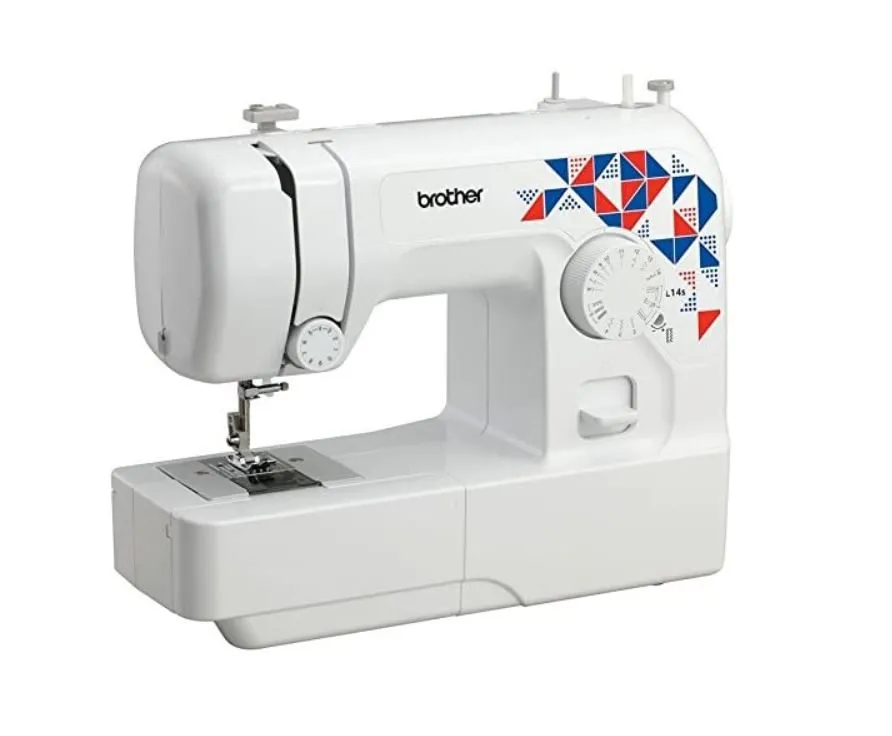
Investing in a good sewing machine can transform your crafting experience. There are a huge variety of machines available for all budgets and abilities and you don't need any previous experience to use one.
If you’re just starting out, there are plenty of affordable machines on the market that are geared towards beginners. Once you’ve gained more experience, you can upgrade to a sewing machine with a greater range of features.
Whatever your level, we’d recommend beginning with Gathered’s best sewing machines guide to find the right one for you.
Fabric
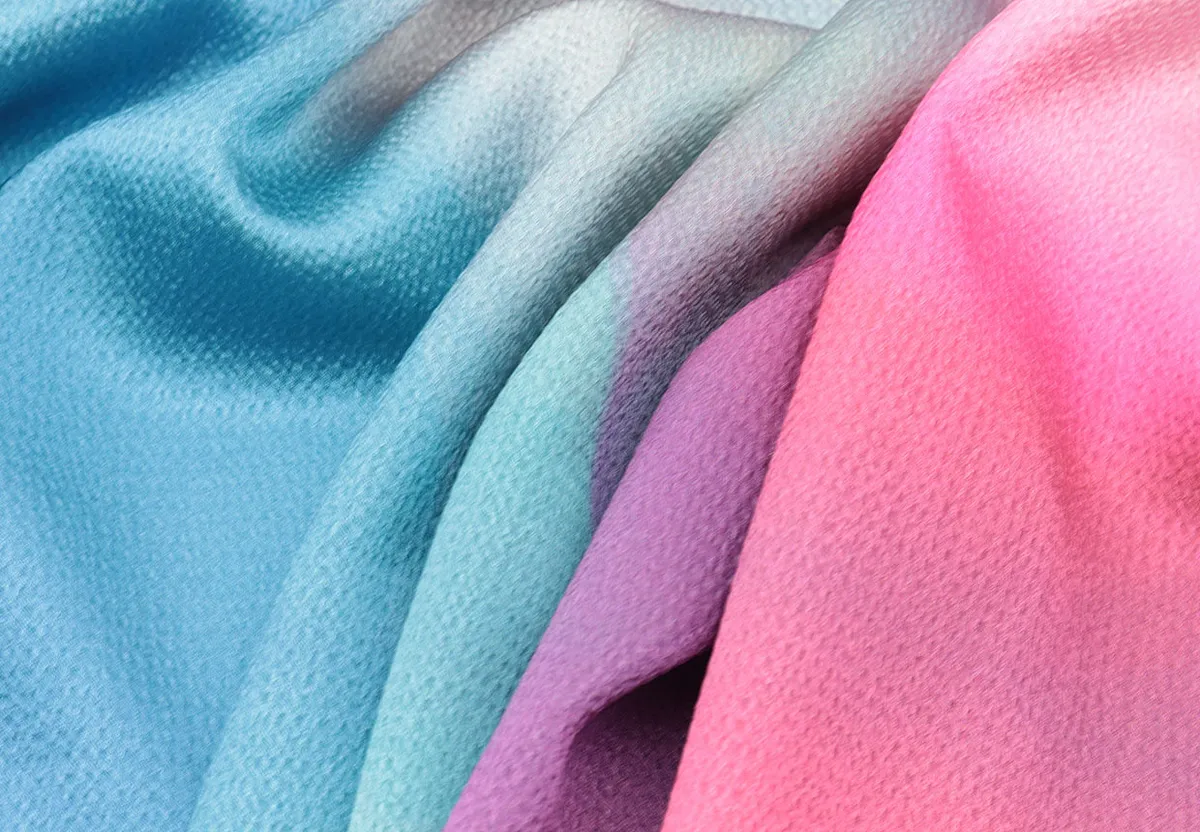
You’ll usually purchase fabric by the yard or metre, but if you just want a small amount of material, opt for a ‘fat quarter’, which is a yard that’s been cut into four sections making a piece of fabric that measures about 46x56cm (18x22in). You can buy these individually or in bundles.
Get to know your material with our fabric types guide.
Sewing tables
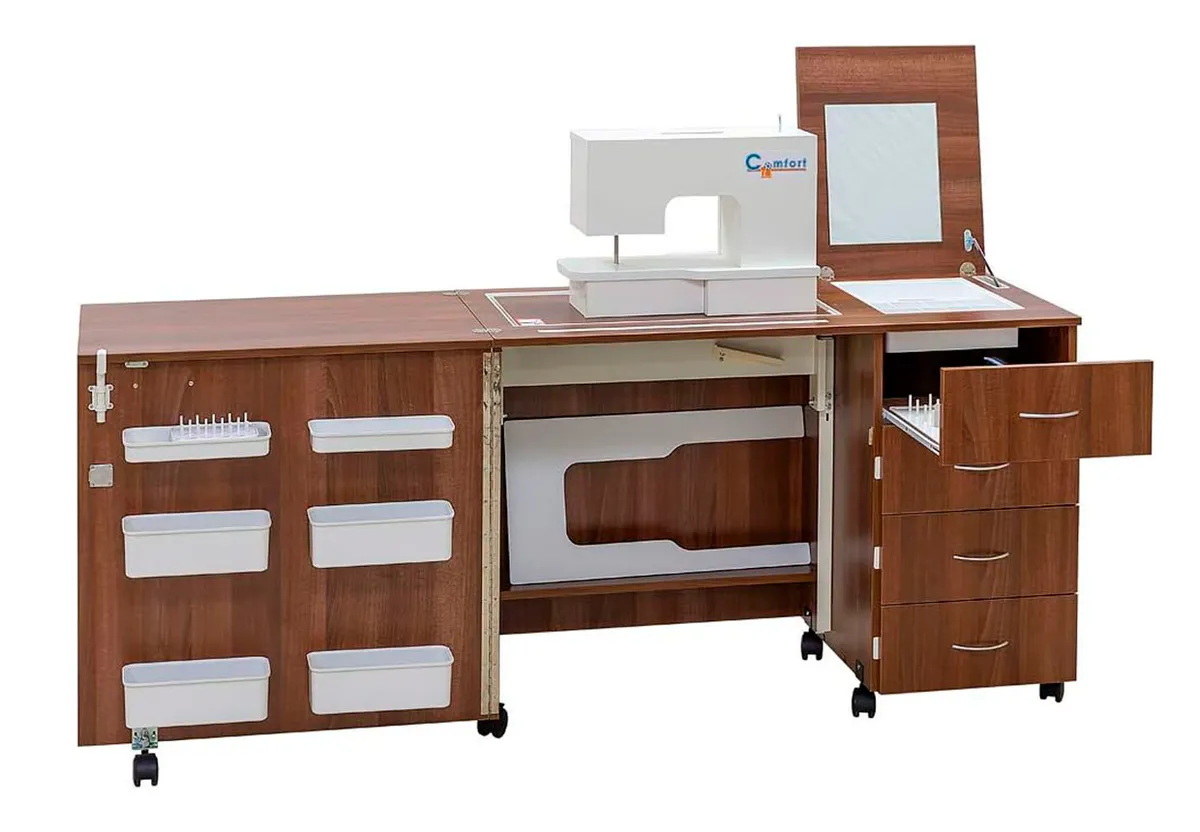
Spruce up your crafting space by getting a sewing table. Many sewing tables can be used to store all of your supplies and have lots of space for you to work.
Some sewing tables are referred to as sewing cabinets and can be folded up to look like a tidy (lockable) cupboard when not in use. This is particularly useful if you have young children in the house and want to keep your sewing tools out of reach.
If you choose the right sewing table, it can also double up as a desk when you’re not crafting.
Check out our pick of the best sewing machine table guide.
Iron and ironing board
If we've learnt one thing from the Great British Sewing Bee, it's that you can never press your projects enough.
Pressing your work is essential if you're making clothes! Regularly pressing your sewing project neatens up the finished look and feel of your garment or project.
If you press frequently as you move through the stages of making a garment or quilt, you'll help smooth the fabric and prepare it for the next stage. You don't need a specialist professional iron and board though – your regular home iron will get you started.
Dress form or dress making mannequin
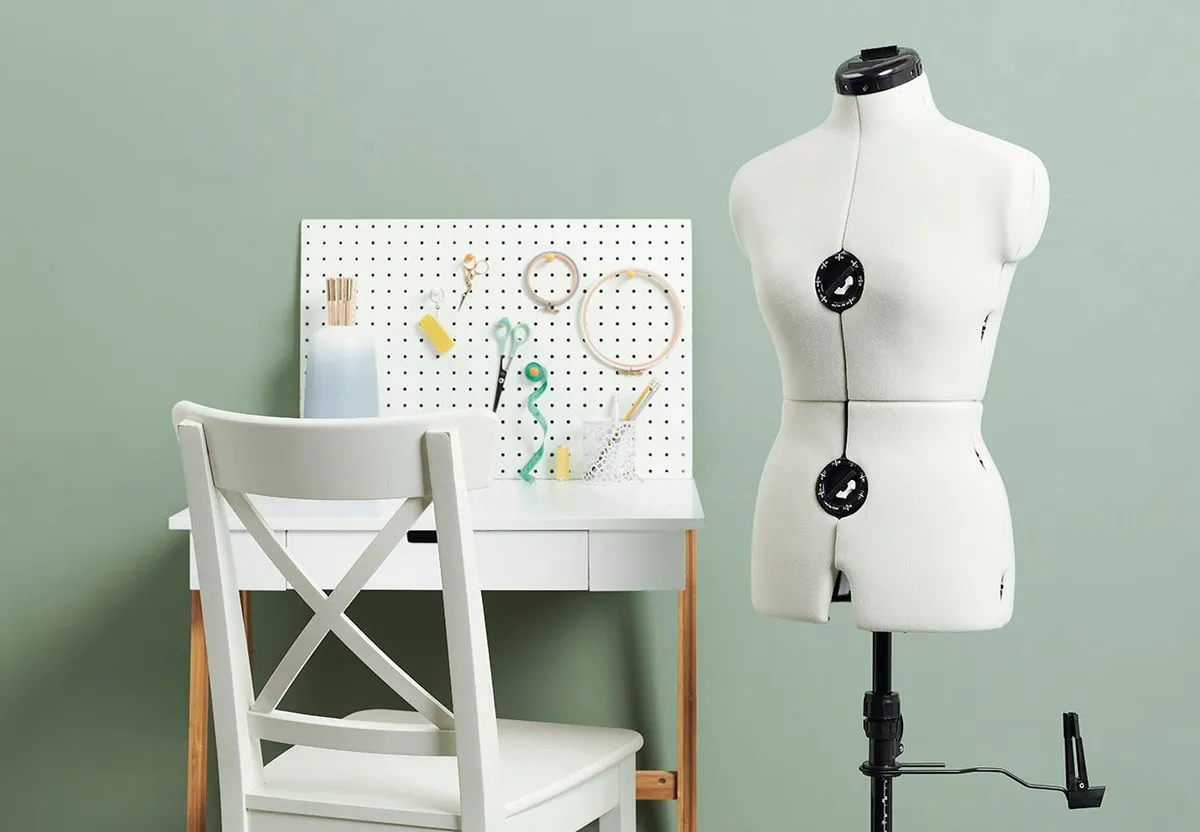
If you love making your own clothes, a dress form or dress making mannequin is an incredibly useful piece of kit.
Use your mannequin to check that your garments fit properly and see how the fabric hangs early in the process. You can even add padding to the mannequin to match the curves of your body for a better fit.
Learn more about dress forms and their features with Gathered’s best dress making mannequins guide.
Thread
There’s a thread for almost every occasion and your local fabric shop will be able to help you find the right one for your project. Cotton is a fabulous all-purpose thread, but polyester (or a mix) is handy if you need extra strength.
Cheap thread is more likely to break easily, so it’s worth spending a little more for a better finish.
Familiarise yourself with different thread types in our sewing machine threads guide.
Embroidery thread
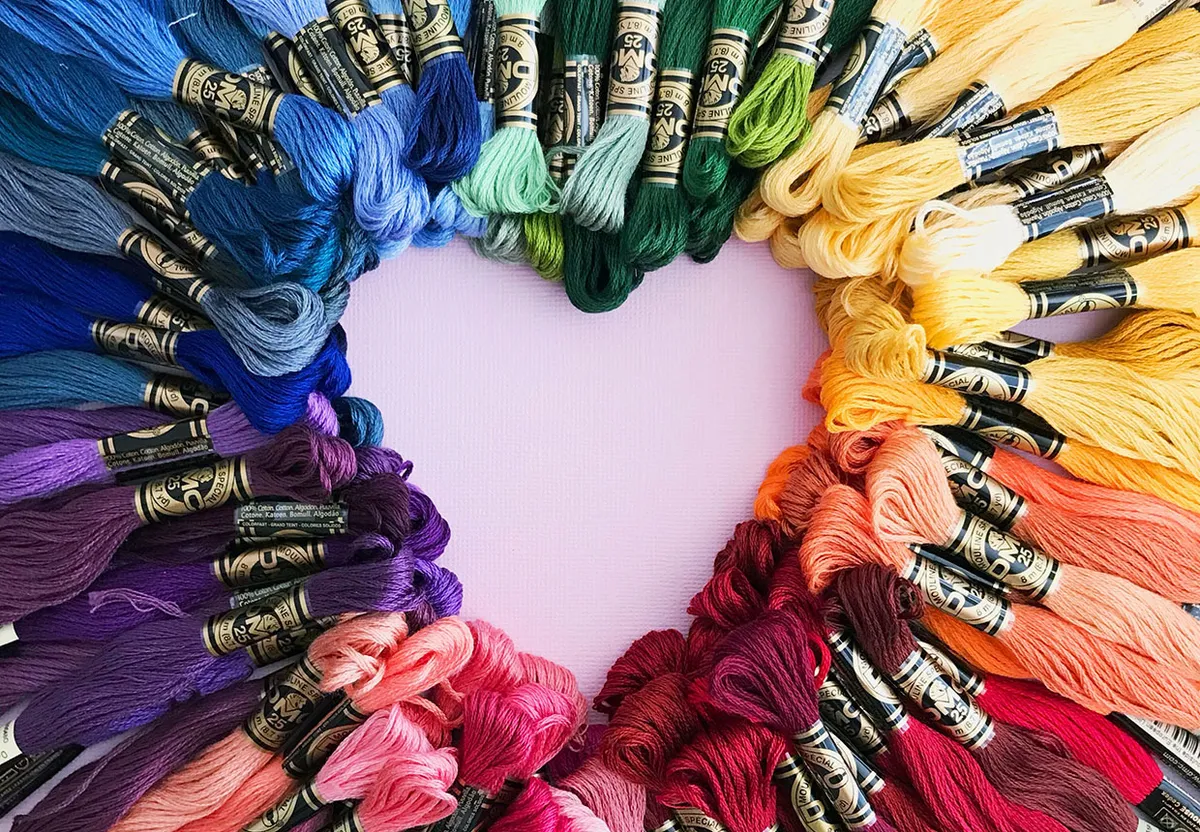
As the name suggests, embroidery thread is most commonly used for embroidery, cross stitch and other forms of needlework. It’s usually made from six strands of cotton, which you can separate into individual strands.
If you’re following a chart then you’ll see a key with numbers that correspond to the required colours of thread.
Get started with our informative embroidery thread guide.
Thread cutter
Essential for the travelling stitcher, this nifty device enables you to snip your threads even when you don’t have the space for (or are not permitted to carry) scissors.
Needles
The needle you use is dependent on what you’re sewing. You’ll find all sorts of specialist needles are available for embroidery, quilting and cross stitch, but a pack of assorted sewing needles is a good place to start.
When you choose your needle, make sure the eye is just large enough for your thread to go through but not too large that it’s constantly slipping out. Use a sharp pointed needle for all sewing – the blunt ones are used for cross stitch and needlepoint.
It’s a good idea to keep a few larger needles in your sewing box, so you always have the right one available for your project.
Tapestry needles, for example, are great for tasks such as threading elastic through a hem to create a drawstring, while chenille needles are perfect for embroidery as they have a larger eye.
Sewing machine needles
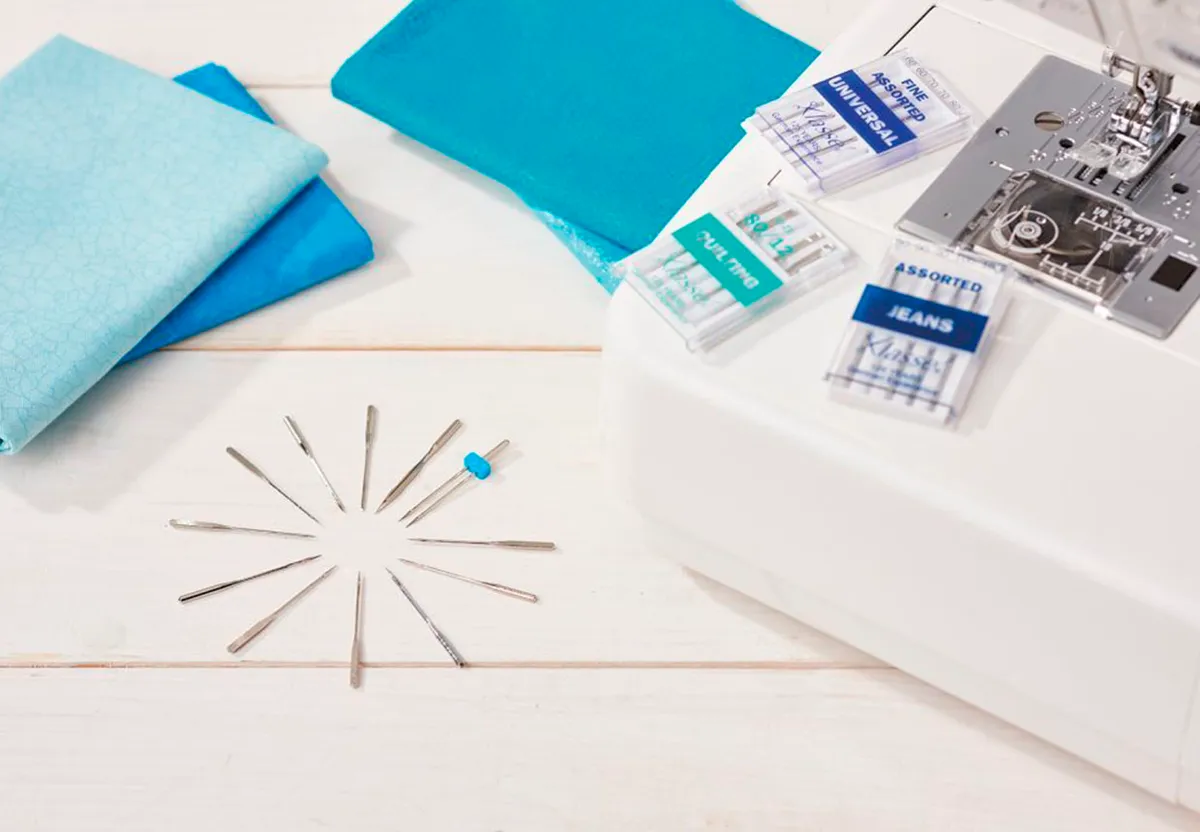
You’ll find there are many types of sewing machine needle to choose from – including specialist varieties just for leather – and different sizes are suitable for different fabrics and stitches.
To ensure compatibility with your machine, check the manual for recommended brands and needle weights.
Discover the correct needle for the job with our sewing machine needles guide.
Needle threader
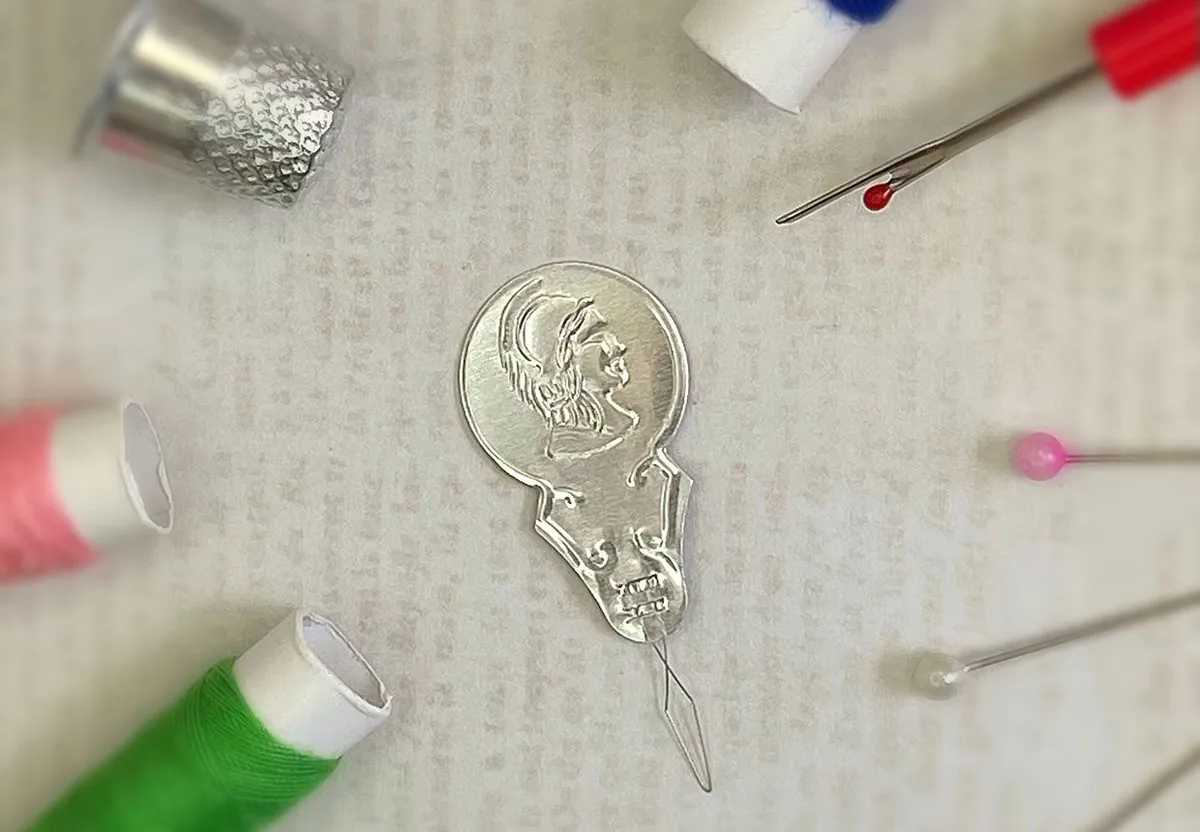
If you struggle to thread needles then you need a needle threader in your life. No more squinting at your needles and fumbling to push the thread through! It makes the process so much easier.
Sewing kits often include a needle threader and they can save you a lot of time and frustration. Learn how to use a needle threader with our step-by-step guide.
Needle minders
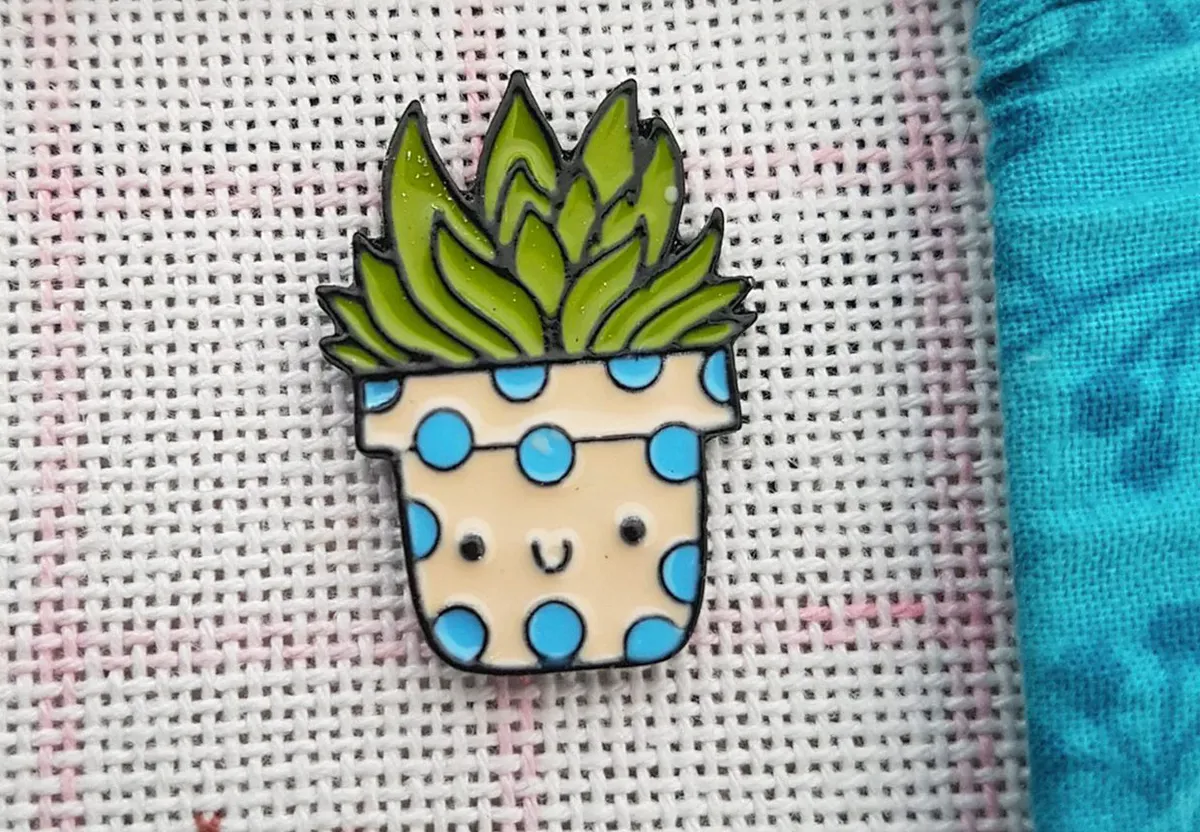
Stop losing your needles all over the place by getting a needle minder to keep them safe. Needle minders are little magnets that your needle will stick to and they come in a huge array of stylish designs.
Explore Gathered’s best needle minders round up to find out more.
Fabric scissors
A pair of dedicated dressmakers’ scissors will help you snip through any fabric with ease. Look for some that are about 20cm (8in) long and have a curved handle to enable accurate cutting on flat surfaces, with pointed tips for precision.
Avoid using your scissors on anything other than fabric or you will blunt the blades.
Learn more about choosing the right scissors with our sewing scissors guide.
Pinking shears
Some woven fabrics can fray easily, but you can help prevent this by cutting them with a pair of pinking shears. These leave a zigzag edge that’s great for storing fabrics and also makes a pretty decorative effect.
Choose a pair with steel blades and a contoured handle that’s comfortable to work with.
Embroidery scissors
A small pair of embroidery scissors is one of the most reached-for items you'll ever add to your stash. From tidying loose threads ends to unpicking rogue stitches, they'll be your trusty friend for many projects for years to come.
Check out our pick of the best embroidery scissors to find the right one for your stash!
Rotary cutters
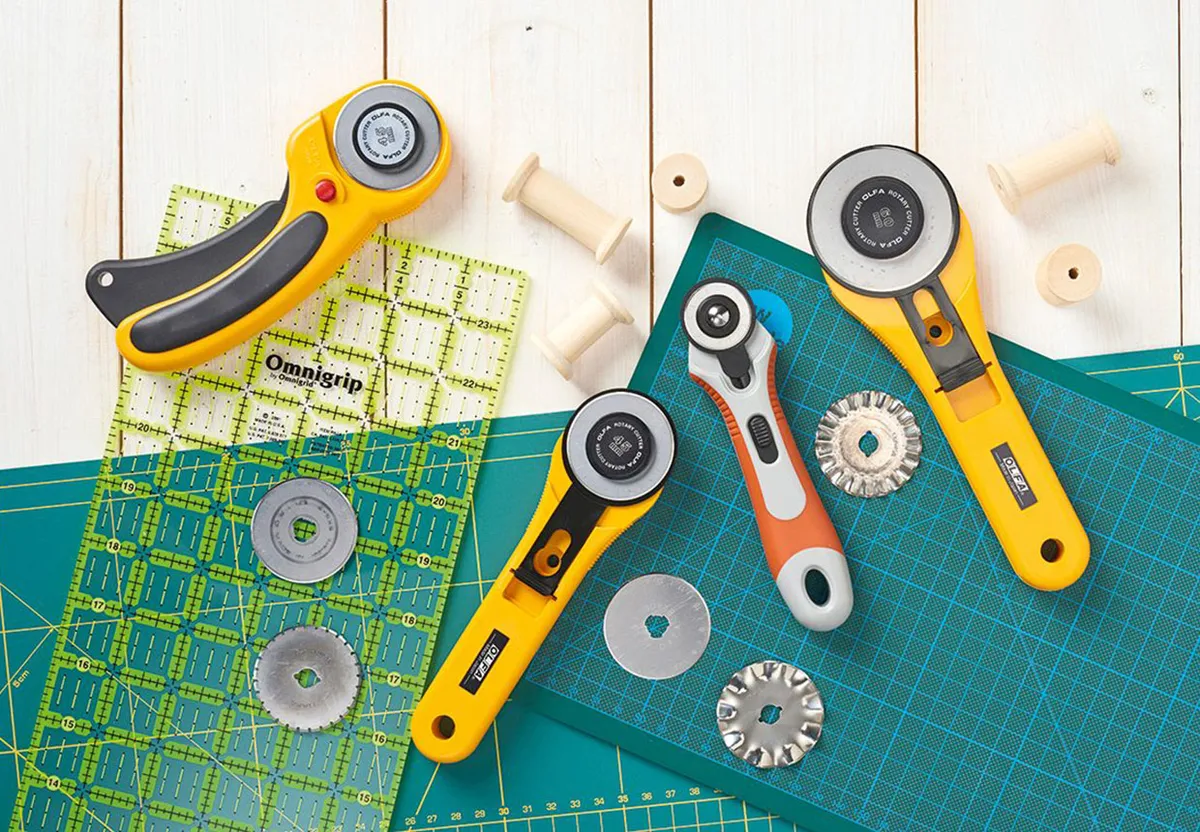
Used to cut fabric, rotary cutters are extremely sharp and should be kept away from children. They’re popular with quilters because they can cut several layers of material at once and be used with a metal ruler, producing more even results than scissors.
Decide what size blade you need before you buy – small diameters tend to be better at cutting curves.
Find the best rotary cutters with Gathered’s round-up.
Tape measure
Measuring fabric correctly is crucial to a perfect finished project (measure twice, cut once!), so a tape measure is one of your most important tools.
Find one that measures around 150cm (59in) and has both metric and imperial units for quick conversions.
Pins
It’s always a good idea to include pins in your sewing kit. You’ll use these to hold your pieces of fabric in place.
You might find traditional dressmakers’ pins fiddly to work with – if so, try pins with larger glass or ‘flower’ heads. Most are between 2.5-5cm (1-2in) long, so you could always collect a variety to use on different projects. Don’t forget to buy a tin or make a pincushion to keep them safe!
Pincushion
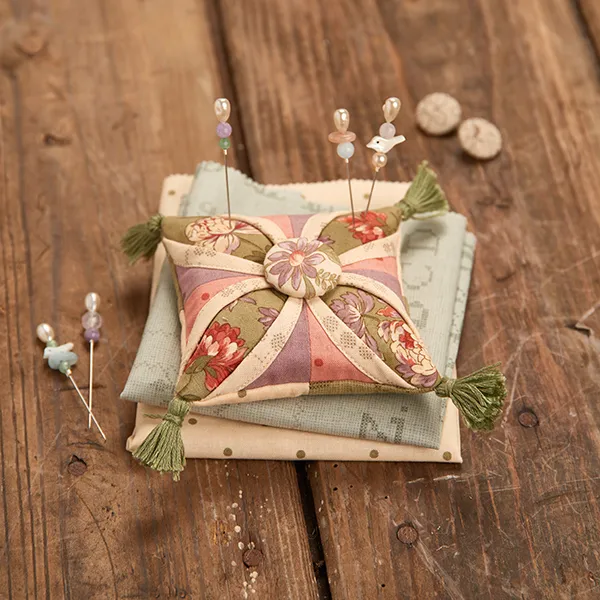
Pins are the handiest of stash items but they get everywhere! Many a sewist has found escapee pins on their carpet or on the sofa. Keep a pin cushion in your kit to keep your pins-in-progress safe and sound.
You can buy a pin cushion or make your own using our free pincushion pattern.
Tailor’s chalk, fabric pencils and fabric markers
Before you start stitching you’ll need something to transfer guidelines on to your fabric. Tailor’s chalk is ideal for this because it goes on and comes off easily – so easily, in fact, that you may need to be careful you don’t brush it off by accident. Choose basic white or go for a coloured chalk if you’re working with pale fabrics.
Fabric pencils are ideal for marking finer lines on to your fabric. They come in different types – iron-on, air erasable, water erasable and chalk (which will brush off). They also come in different shades, so you can find the colour that stands out best on your material. Soapstone pencils rub off easily and show up on darker fabrics.
For extra precision, and lines that are easier to see on pale cloth, use a soluble fabric pen to mark out your design. Always test the pen on a scrap of fabric before you begin to ensure that it comes off easily with water, and avoid ironing over any of the marks because this can make the line permanent.
Fabric markers are incredibly useful to have in your sewing stash. Find the best one for the job with our fabric markers guide.
Seam ripper
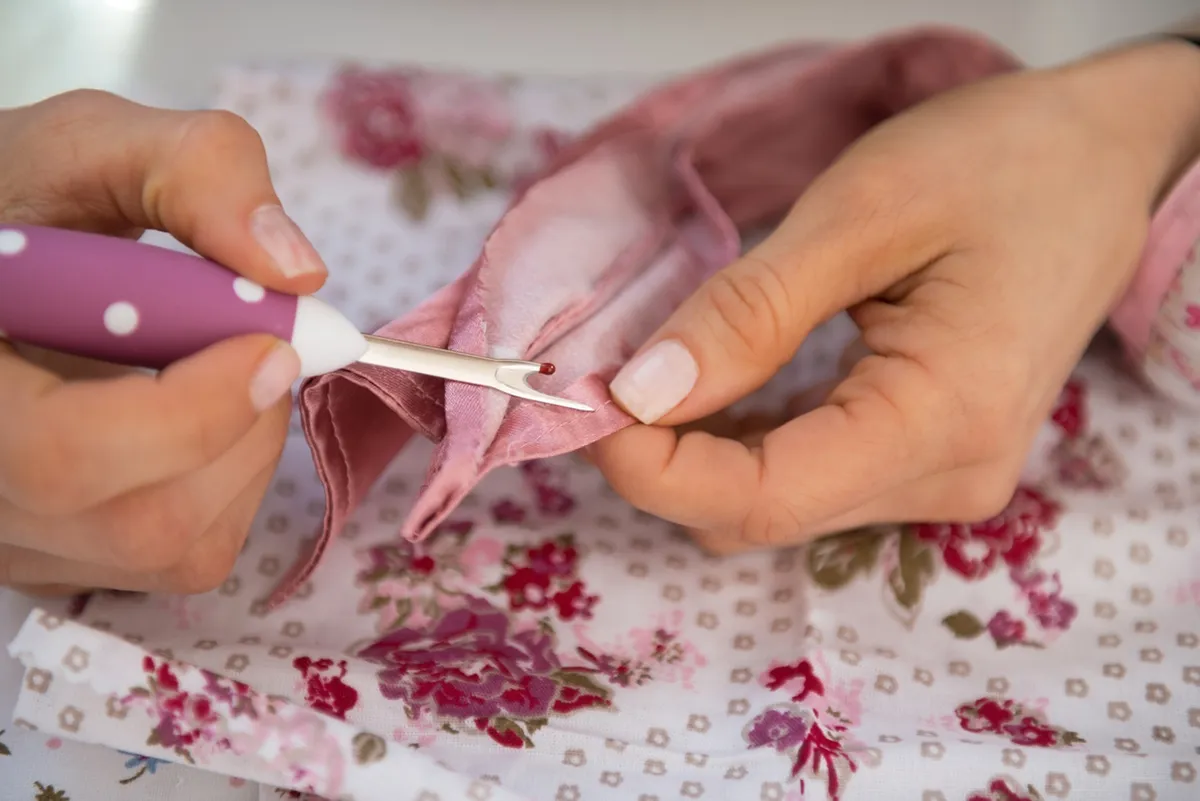
Everyone makes mistakes now and then, and this clever gadget takes some of the frustration out of unpicking your stitches.
Simply slip the pointed end under your stitch (taking care not to catch the fabric as you go) and cut through it by gently pulling upwards. Look out for non-slip handles as these make the seam ripper easier to use.
Head over to our round-up of the best seam rippers to pick up one of these great little sewing tools.
Bobbins
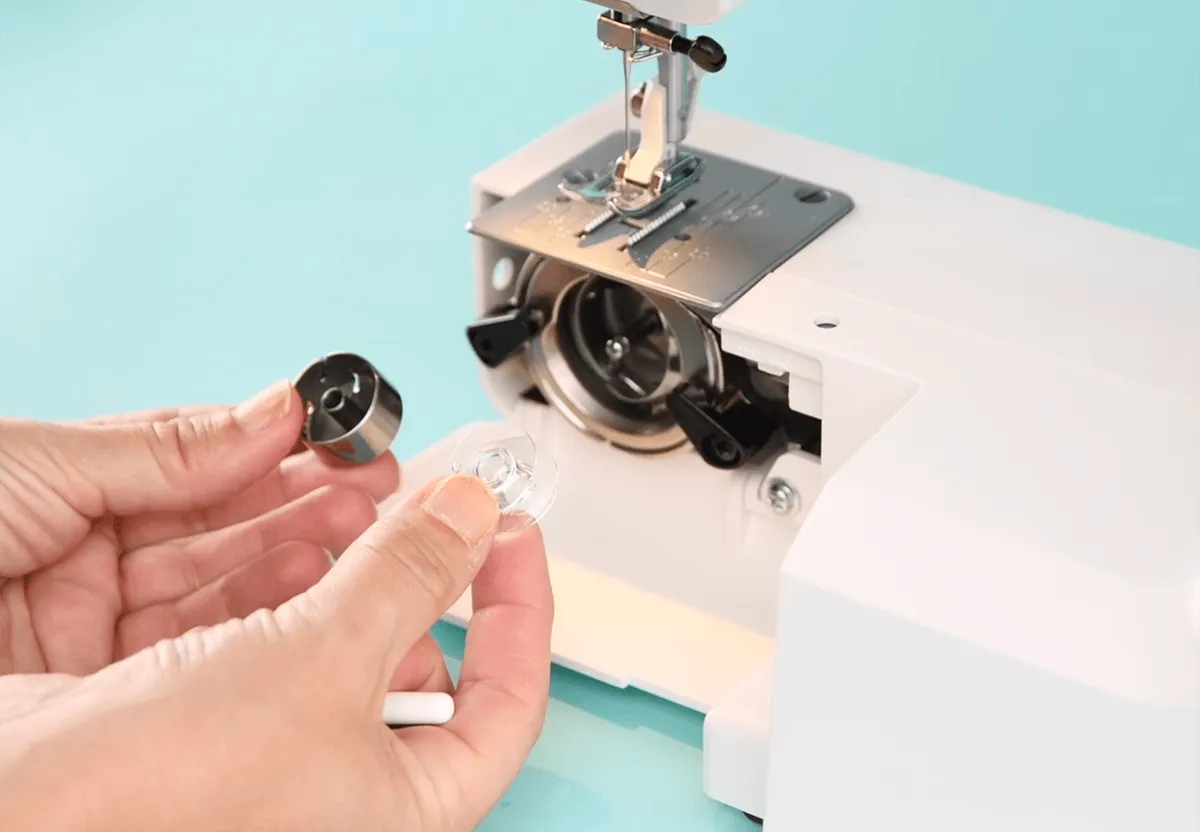
Bobbins are an essential part of your sewing machine. It’s actually a thread holder, which feeds thread into the machine.
Winding and inserting the bobbin is often something that beginners struggle with, but you can find lots of helpful pointers in our how to thread a bobbin guide.
A beginner’s guide to sewing
If you’re new to sewing, get started with our detailed sewing for beginners guide.
It covers everything you need to know, from basic sewing skills to simple pattern recommendations.
Buttons
Whether you’re using them for practical fastenings or just for decoration, you can never have enough buttons! They’re usually sold by size (diameter in millimetres or inches), either individually or in packs.
Most are flat, but ‘shanked’ buttons have a loop on their underside that helps thicker fabrics to sit beneath them when the garment is buttoned up.
Fastenings
Keep a few fastenings to hand – they’re endlessly useful, especially for dressmaking. Here are some handy fastenings to buy:
- Snap fasteners (also known as press studs) are used to hold two pieces of fabric together and can’t be seen from the front.
- Hooks and eyes hold fabric edges flush together or you can buy magnetic fastenings, which are ideal for bag and purse closures.
- Safety pins are great for securing thicker fabrics or for threading cord through casings.
Thimble
It’s a good idea to save yourself from pricked or calloused fingers with a thimble. They are usually worn on your middle finger to help you push your needle through thicker fabrics.
Metal ruler
Keep a ruler in your sewing kit to make sure you get perfect measurements every time. Your ruler should have both metric and imperial units – a 15cm (6in) ruler is enough for smaller projects.
Go for durable metal rather than plastic and you’ll also be able to use it as a guide for creating straight lines with a rotary cutter.
Cutting mat
A cutting mat protects your work surface while you’re using a rotary cutter. Most are ‘self-healing’ (meaning that any scratches magically disappear after use) and are printed with grid lines to help you line up your fabrics.
Cutting mats are about 2mm thick, come in a range of sizes and should be stored flat so they don’t bend and warp.
Why it’s important to get to know your sewing tools
Whether you’re new to sewing or an experienced stitcher, it’s a good idea to take the time to get to know your sewing tools. It’s really useful to know the best tool for the job, from handy thread cutters to sewing scissors.
Once you know your stuff, you can put together the sewing kit of your dreams – or design the perfect sewing room for your needs!
Find the best fabric for your next sewing project
Ready to start your next project? Once you’ve found the right pattern, it’s fun to look for the perfect fabric to make it with!
Start browsing for materials in our pick of the best online fabric shops.
